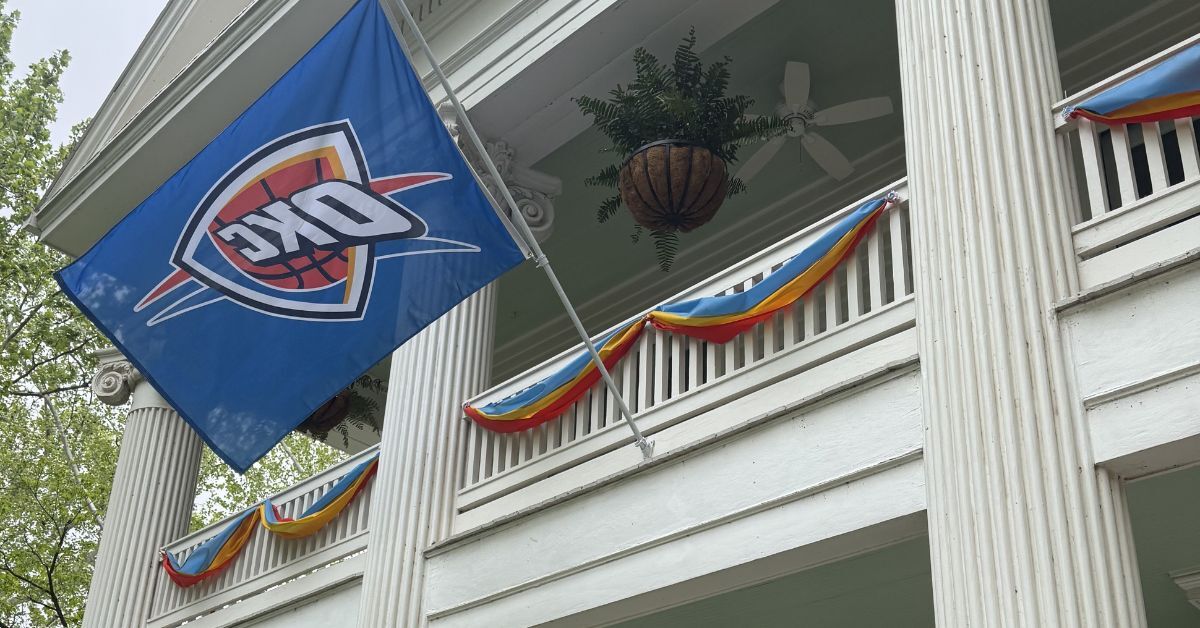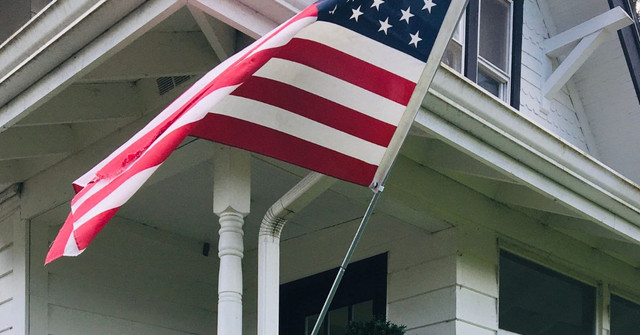The Pros and Cons of Different Flag Materials
Nov 12th 2025
When you choose a US flag for your home or property, you select one that features the right material. This factor can significantly impact its appearance, durability, and overall performance. Different materials offer distinct benefits and have specific drawbacks involving factors such as weather conditions, frequency of use, and visual preference.
This guide will provide a comprehensive comparison of three of the most popular flag materials: cotton, nylon, and Poly-Max. By understanding the advantages and disadvantages of each, you can make an informed decision and select the flag that best suits your needs. Read on to learn about the pros and cons of these different flag materials.
Cotton Flags
Cotton has long been a traditional material for flags, offering a classic look. You can read about the advantages and disadvantages of utilizing this classic, renowned material below.
Pros of Cotton
One of the benefits of buying a cotton flag is its exceptional appearance, which allows you to have a banner with vibrant, deep colors. The material absorbs dye in a way that produces a vibrant and authentic look, which is why people often prefer cotton for ceremonial displays, parades, and indoor settings.
The texture of a cotton flag is soft and substantial, giving it a high-quality feel and an elegant drape that looks impressive in a formal environment, such as an office, auditorium, or courtroom. This traditional aesthetic makes cotton an excellent choice for historical reenactments or displays where individuals seek flags with a sense of authenticity and a timeless quality.
Cons of Cotton
Despite its beautiful appearance, cotton has significant disadvantages, particularly when used outdoors. When exposed to rain or high humidity, it absorbs moisture, making the flag heavy and preventing it from flying properly. This retained moisture can also lead to the growth of mildew, causing the fabric to deteriorate over time.
Furthermore, prolonged exposure to direct sunlight can cause the rich colors of a cotton flag to fade relatively quickly. The material is also more susceptible to tearing and fraying when subjected to wind compared to its synthetic counterparts. Due to these factors, cotton flags require more maintenance and are best suited for short-term outdoor display in fair weather or for permanent indoor use.

Nylon Flags
Nylon has become one of the most popular and versatile materials available for flags today. Some of its advantages, listed below, have made it an excellent all-purpose choice for a wide range of applications.
Pros of Nylon
Unlike cotton, nylon excels in outdoor use. The material is lightweight and sheds water effectively, allowing it to dry quickly after a rainstorm and resist the formation of mildew. This quality helps preserve the flag's strength and appearance over time.
Additionally, because it is so light, a nylon flag can fly gracefully even in a slight breeze, creating the iconic rippling motion that many people appreciate. Manufacturers also treat the material for UV resistance, which helps its bright, bold colors remain vibrant despite long-term sun exposure. Its combination of durability and excellent flyability makes nylon a dependable choice for residential and commercial displays in areas with moderate weather conditions.
Cons of Nylon
Although nylon is a strong and reliable material, it is not indestructible. In regions that experience consistently high winds, the lightweight nature of nylon can become a drawback, as it may be more prone to fraying and tearing than heavier fabrics.
Although it offers a brilliant, lustrous sheen, some people may find that nylon lacks the traditional, classic texture of a cotton flag. Its appearance is more modern, which might not align with every aesthetic preference, particularly for those seeking a historical or ceremonial look. However, for most everyday outdoor applications, these considerations are minor compared to the material's overall practical benefits.
Poly-Max Flags
One additional material is Poly-max, a type of two-ply polyester. This material has a reputation for being a more robust option for flags.
Pros of Poly-Max
When people buy flags made of Poly-Max, they can count on superior strength and longevity. The fabric is exceptionally tough, offering substantial strength even in high-wind conditions. This makes it the ideal material for flags flown on tall flagpoles or in open areas where they experience exposure to strong, consistent gusts.
Poly-Max material also boasts the best color retention of any flag fabric. It is highly resistant to UV fading, ensuring that its colors remain deep and rich for an extended period. For businesses, municipalities, or individuals who fly a flag 24/7, a Poly-Max flag is a sound investment that will outlast other materials.
Cons of Poly-Max
One disadvantage of Poly-Max is its weight. Because it is a much heavier fabric than nylon, a Poly-Max flag requires more wind to fly properly. In areas with little to no breeze, it may hang limply from the flagpole.
The robust construction and premium materials used also mean that Poly-Max flags are typically more expensive upfront than nylon or cotton options. However, their extended lifespan can make them more cost-effective in the long run, as users will need to replace them less frequently.

Comparing the Different Materials
After reviewing the pros and cons of these different flag materials, you may feel unsure which to choose. Deciding between these options comes down to balancing your priorities regarding appearance, durability, and location. For instance, if you need a US flag for an indoor ceremony or a protected historical display, the rich, traditional look of cotton is an ideal choice. Its classic texture and deep colors create a sense of dignity and respect that is perfect for formal settings.
However, if you require an outdoor US flag, consider picking one made of nylon. It is a reliable workhorse that holds up well in sun and rain, flies beautifully in a light breeze, and maintains its vibrant appearance. This makes it the most popular material for residential flag displays and many commercial applications. If you live in an area with varied weather, nylon is the most practical and visually pleasing option.
When your flag needs to endure harsh and relentless conditions, Poly-Max is the way to go. Its heavy-duty construction can endure constant exposure to the elements, making it perfect for commercial properties, coastal regions, or any location where durability is paramount. Although it requires a larger initial investment, its unmatched longevity provides significant value over time.
Now you know why selecting the right flag material is a crucial step in ensuring your US flag remains a proud and lasting symbol. By considering where and how you will display your flag, you can choose a material that best suits your needs and environment.
To purchase the perfect US flag for your property, contact Independence Bunting & Flag Corp. about our cotton, nylon, and Poly-Max flags. We can offer you superior options to help you display your pride with confidence and style, no matter the setting.








